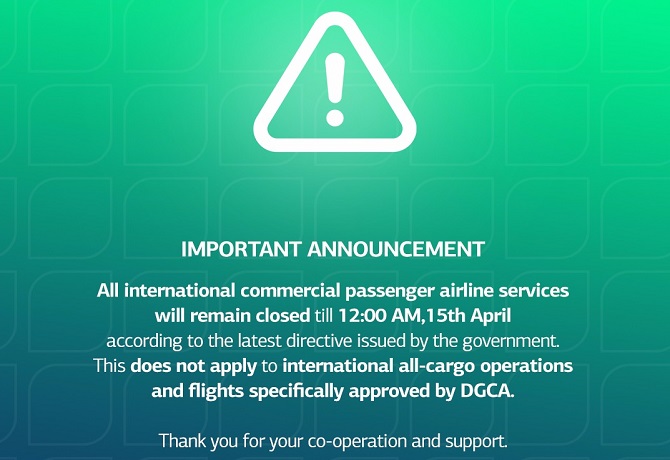Shark Tank is a popular American reality television show that has been adapted in many countries around the world, including India. The show features aspiring entrepreneurs who pitch their business ideas to a panel of investors (or “sharks”) in the hopes of securing funding and support for their ventures. Shark Tank India Season 2 premiered on 2 January 2023.
It remains to be seen how successful the entrepreneurs will be in securing funding and support from the “sharks”.. But we made a little dictionary of all the definitions that were shown in Shark Tank India Season 2-
Acqui-Hire: When a company acquires another company with the intention of gaining access to their human capital and talent profile
Anti-Dilution Clause: It allows the investors to maintain their ownership percentages in the event that new shares are issued
Arbitrage: It is the simultaneous purchase and sale of the same or similar asset in different markets in order to profit from tiny differences in the asset’s listed price
Average Selling Price: The average price at which a particular product or commodity is sold across channels or markets
Bad Debt: It is the term used for any loans or outstanding balances that a business deems uncollectible
Beta Testing: It is a type of user acceptance testing where the product team gives a nearly finished product to a group of target users to evaluate product performance in the real world
Black Swan Event: It is a metaphor describing a rare, unexpected phenomenon with a low probability of occurrence, yet has a significant impact on society as a whole
Blockchain: A decentralised digital ledger of transactions maintained by a network of computers in a way that makes it difficult to hack or alter
CapEx: Capital Expenditure: It is the money spent by a company to buy, maintain, or improve its fixed assets such as property, buildings, equipment, etc
CCD: Compulsory Convertible Debentures: Instruments which are recognised as debt initially till they are converted mandatorily in equity shares of the company
Commoditisation: It is the process by which products or services become inseparable from competing offerings over a particular period. Price becomes the only distinguishing factor
Content Seeding: It is a strategy in which content creators plant a brand’s content across various platforms to reach their target audience and attract leads
Credit Period: The time given to the customer to make the payment for the goods or services purchased
Convertible Debt: A type of financing that gives investors the option to convert their debt into equity in a company at a future date
Cottage Industry: It is a small manufacturing operation and is often run out of a home by a single individual or family
Debt Leverage: The use of debt (borrowed capital) in order to undertake an investment or project
Docked Bicycle: It refers to a bicycle that is designed to be locked or secured from unauthorized use by being locked or secured to a dock, rack, sharing station, etc.
Dock-less Bicycles: Instead of docks, these bikes are secured using locks that are built onto the frame.
Typically, an app is needed to gain access to these bicycles
Down-round: A scenario where the value of a business at a time of investment is below the value of the same business during a previous period or financing round
Fill Rate: It is the percentage of customer order demand that is met
First Principles Thinking: It is a means to challenge assumptions and solve complex problems by breaking them down into their most basic elements and reassembling them from the ground up
Freeze Drying: It is a low temperature dehydration process that involves freezing the product and lowering pressure, removing the ice by sublimation
Funding Winter: It refers to a period of market correction in capital inflow which lowers the probability of startups getting higher valuations in the short to mid term
Geofencing: It refers to creating a virtual geographical boundary that triggers an action to a mobile device when a user enters or exits that boundary
GMV: Gross Merchandise Value: A business metric commonly used in ecommerce which measures the total value of sales over a certain period of time
Hub and Spoke Model: A distribution model used to disperse inventory to multiple fulfilment centres from a large distribution centre
If Else Statement: In programming, it is a conditional statement that runs a different set of statements depending on whether an expression is true or false
Incineration: Destruction of something, especially waste material, by burning
Inflection Point: A key event that dramatically changes the trajectory of a business, industry, or economy
Institutionalisation: It is the action of establishing something as a convention or norm in an organization or culture
Intercropping: The practice of growing two or more crops in proximity
Jagriti Yatra: A 15 days train journey that brings together youth from all across the globe to encourage entrepreneurship in India
Lead to Sale Conversion Rate: It is a metric that measures how effective the sales team is at converting a prospective customer, called a lead, into a paying customer
Listing Fees: It is the amount of money a company pays a retailer to appear on the shelves
Loan Underwriting: It is the process by which the lender decides whether an applicant is creditworthy and should receive a loan
Markup: It is a percentage that is added to the cost of a product to determine its selling price, in order to cover costs and provide profit
MAU: Monthly Active Users: The number of unique users who engage with an app or website within a predefined 30-day period
Moat: A distinct competitive advantage that helps the company protect its market share
Mulch: A protective covering (as of sawdust, compost, or paper) spread or left on the ground to reduce evaporation, maintain even soil temperature, prevent erosion, control weeds and enrich the soil
Nudge: A nudge is a contextual push notification that is aimed at deriving action from receivers
Omni-channel: It describes a business strategy that aims to provide a seamless shopping experience across all channels, including in store, mobile, and online
Operating Lease: It is a contract for a company to use an asset and return it in a similar condition to the lessor
Operating Profit: It is the total income a company generates from sales after paying off all operating expenses, such as rent, employee payroll, equipment and inventory costs. It excludes gains or losses from interest, taxes and investments
Payback Period: It refers to the time required to recoup the funds expended in an investment, or to reach break-even point
Pharmaceutical Grade Sugar: It is the more pure form of sugar that may not contain sulphur and heavy toxic material like lead arsenic and mercury etc. It is used mainly in preparation of pharmaceuticals and food products
Proctoring: To watch people taking an exam in order to check that they do not cheat
Protective Farming: It is a practice of preventing the crop from different agents including pests, weeds, plant diseases, and other organisms that cause damage to the agricultural crops
Prototype: “Before a lot of money is invested in a product, you create a working sample of it. This is called a prototype. After market testing the prototype you can also improve the product and its usefulness-“Anupam Mittal, Shark Tank judge
Realised Revenue: It is revenue that the company already has received
Receivables: Amount owed to a firm by its customers for goods or services used or delivered but not yet paid for
Reverse logistics: The supply chain process of returning products from end users back through the supply chain to either the retailer or manufacturer
Risk Return Ratio: A measure of return in terms of risk for a specific time period
ROFR: Right of First Refusal: It is a right in a contract that gives shareholders the opportunity of matching the price at which a third party has agreed to buy shares from existing investors or founders
SEO: Search Engine Optimisation: The process of improving the quality and quantity of website traffic to a website or a web page from search engines
Secondary Sale of Shares: It is the sale of shares of a private company by an existing investor to a third party that does not occur in connection to the acquisition of the company
SOP: Standard Operating Procedure: A set of written instructions that describes the step-by-step process that must be taken to properly perform a routine
Sunk Cost: Money that has already been spent and cannot be recovered
Table Turnover Rate: It measures the amount of time a party occupies a table over a specific period of time
Take-Rate: It is the fee charged by a marketplace on a transaction performed by a third-party seller or service provider
Term Sheet: A non-binding agreement outlining the basic terms and conditions under which an investment will be made
Throughput: It is the amount of a product or service that a company can produce and deliver to a client within a specified period of time
Trademark: A special symbol, design or name that a company puts on its products and that cannot be used by any other company
Valuation Floor: It sets the minimum possible valuation at which the convertible note derives its conversion price
Viral Coefficient: The number of new consumers or customers that are generated by an existing satisfied customer
Web 3.0: It is the concept of the next generation of the web, in which most users will be connected via a decentralised network and have access to their own data
White Labelling: When a company buys its product or service from another company and rebrands it as their own
Y2K Bug – Year 2000 Bug: A computer flaw, or bug, that may have caused problems when dealing with dates beyond December 31, 1999
Acronyms
FBA: Fulfillment by Amazon
GSM: Grams per Square Metre
КРО: Knowledge Process Outsourcing
OTA: Online Travel Agency
LTV: Lifetime Value



